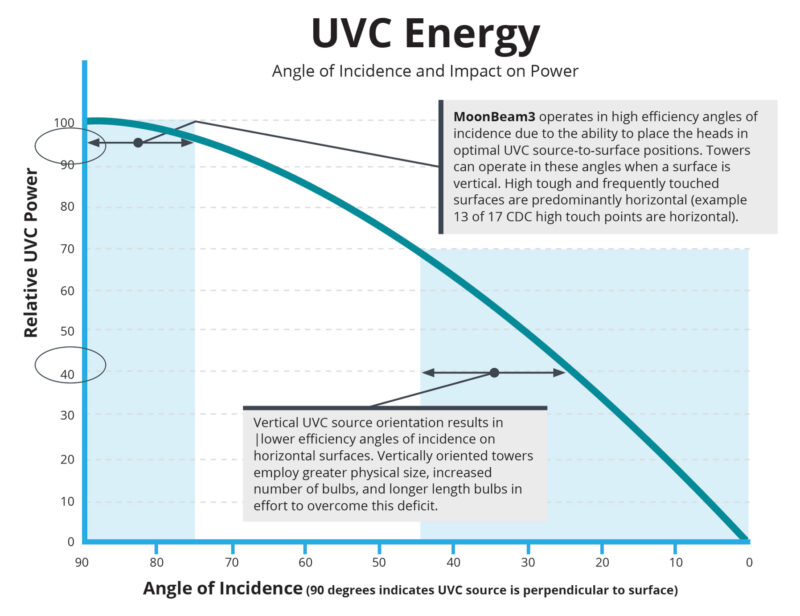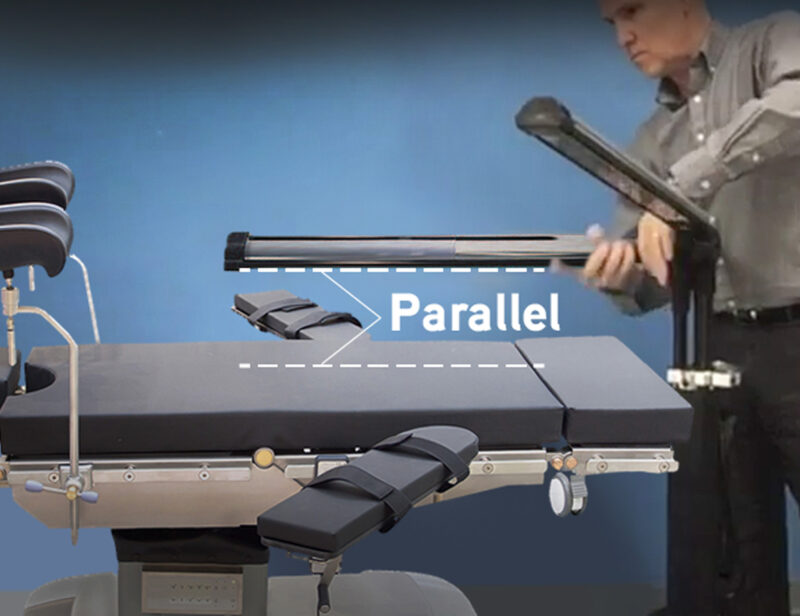

Combining the inverse square law and angle of incidence formula is a useful tool in evaluating UVC technologies. It should be apparent that the best result may be achieved with UVC sources positioned as closely as possible to the target area to minimize loss due to distance and orienting the source. This will allow the UVC to be directed perpendicularly to the target for maximum impact. This is indeed the case, but just sticking to the angle of incidence consideration for a moment, take a look at the chart above.
What does this chart show? It shows that it is very relevant and powerful that MoonBeam3 is always able to be positioned to the optimal angle of incidence. MoonBeam3 can be positioned at the optimal angle of incidence to achieve optimal results every time. It also shows that “Towers” (we’re using this term generically; more on this below), can be powerful when they are being used on vertical surfaces. The problem is that the predominant surfaces to be disinfected are not vertical.
Now the “one – two” punch: MoonBeam3 combines the ability to “get the dose close” and “apply the dose straight.” Towers can “get the dose close” by applying brute force, but they have difficulty in the ability to “apply the dose straight.” Physics steps in, and that is what happens.
The above chart shows the cumulative effect of distance between the source and the target, and the result of not applying the dose directly. In the chart, “Towers” were given the benefit of claiming that their average angle of incidence is 22.5 degrees. However, it really is not as they typically have even steeper incidence angles, but we’ll keep it conservative. For MoonBeam3, let’s assume we only average 75 degrees, of course, we do consistently better but again, this is conservative and allows for “sloppy” set up.
When Moonbeam3 is used as intended, the results are excellent, even when used as a room disinfection system. However, when the target gets far away, like the corner of the room, the larger vertical bulb systems start to excel. This comes at a significantly higher cost – a cost that is far greater than simply moving MoonBeam3 and running it for another 90 seconds.
So, key point three: “get the dose close” and “apply the dose straight” are important, but the more powerful contributor is “apply the dose straight”.
“Okay, the physics checks out, but what about…” This all looks pretty good for MoonBeam3, and it is good in reality, but there are obvious questions. “Is MoonBeam3 equal or better than a ‘Tower’ with a lot more bulbs?” And, “Why not just radically add in a large amount of UVC bulbs and overcome the initial loss?” The answers should already have started to become apparent, but consider the physical construction of the systems.

